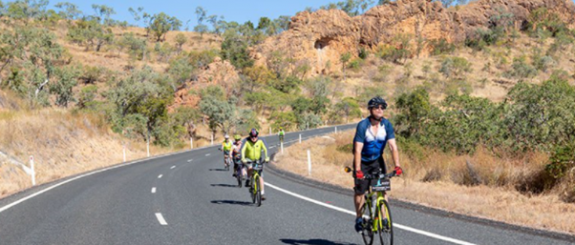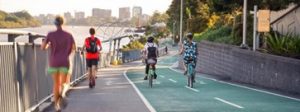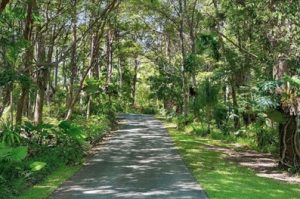Seeking the Post-Covid Sunshine: Refocusing the Travel Sectors on a Renewed Spirit of Country

By Denis Bright
Cut off from overseas recreational travel destinations beyond the Trans-Tasman travel bubble, Australians are still left with a range of more localized travel options.
Affordability is the key to the revival of our domestic travel. No authority is to blame for the popularity of overseas travel in the pre-COVID era. Departures of Australians for overseas destinations reached an estimated 11.3 million in 2019.
An estimated $63 billion was spent overseas by Australians in 2019 on travel and family visits. This represented about 3.5 per cent of GDP. These outflows were largely balanced by incoming tourist revenue by 9.4 million visitors.
While New Zealand and Bali topped the destination list for Australians, the big spenders were the visitors to other exotic long-haul destinations.
With opportunities for domestic travel and visits to New Zealand now opening up, Australian tourism must refocus on more localized travel opportunities. One risk of the Trans-Tasman travel bubble is for New Zealand to become the paramount destination for Australians who are hungry for an overseas travel venture.
Federal air fare subsidies are certainly a welcome initiative to Australian travel. The initiative has bipartisan support. Labor would widen the choice of destinations.
The tyranny of distance is always a real barrier to local travel by Australian residents. This barrier is easily illustrated by the challenges faced by tourists seeking out remote destinations across Northern Australia for their winter travels.
A road trip from Sydney to North West Queensland (NWQ) through Mount Isa (2,400 kms by the most direct route) would literally 25-30 hours behind the wheel. The trip would take a minimum of three or four days in each direction from Sydney. Most drivers would prefer more stopovers but this really cuts into the limited holiday time from increasingly deregulated workplaces.

There are few real alternatives to the use of private vehicles for affordable long distance Australian travel. Travelling the Savannah Way on separate escorted safari tours between Broome and Cairns now is far more expensive than any European jaunts from pre-COVID days. Self-drive vehicle hire is quite expensive on back roads which might be off-limits to standard insurable packages.
It will be left to future generations to perfect more affordable hop-on off bus connections along this 4,000 km route via Darwin, Kakadu, Boodjamulla (Lawn Hill) and the Cairns Outback during the winter months. Such transport options would require government subsidies at state and territory levels. Only the current bans on overseas travel justifies the addition of long distance affordable bus routes.
Before the current COVID crisis, exotic localities like Boodjamulla Gorge (Lawn Hill) were always in competition with long-haul overseas destinations like Italy or the Greek Island.
Regrettably, Indigenous involvement in the management remote accommodation facilities near the Boodjamula National Park was minimal even though this Spirit of Country has so much to offer.

Image from Boodjamulla National Park Queensland National Parks
Indigenous communities certainly benefited from royalties negotiated with operators of the Century Mine which operated between 1999 and 2015 (Details available from Carpentaria Land Council Aboriginal Corporation (ALCAC). Support for the diversification of economic activity in NWQ was an afterthought as the riches from the mineral boom became more threadbare.
After sixteen years of mining operations the most accessible ores are now exhausted. Some tailings are still being reworked adjacent to the open cut mine site and are still transported to the port of Karumba by pipeline.
Tourism near Boodjamulla National Park increased in importance after 2015. Tourist visits were centred on the camping and accommodation available near Adel’s Grove. Some of these facilities were destroyed in an overnight fire in 2019.
The Queensland Government had supported botanical research, tropical agriculture and grazing at Adel’s Grove from the 1920s. These experimental efforts were devastated by flooding in the late 1950s. The site drifted back to becoming an accommodation centre and had a low level of self-sufficiency despite the local water resources available.
Veteran botanist Albert de Lestang (1884-1959) spent his final years in the Charters Towers Eventide Home when corporate and government support for the rehabilitation of Adel’s Grove was not forthcoming. Anecdotes from Southern Gulf Catchments recall the demise of Adel’s Grove as a botanical research site (2012):
After de Lestang died in 1959 Adel’s Grove was neglected with mining prospectors camping there for a time. Most of his trees and shrubs did not withstand the lack of attention and have succumbed to drought, fires and termites. Those that have survived thrive alongside the remnants of his irrigation channels. Early in the 1980 Adel’s Grove was purchased by the present owners with an eye towards the increasing tourist trade within the Burke Shire.
Defenders of local ecosystems could take heart from the successful claims by first nations people at Boodjamulla National Park. Every major piece of infrastructure now invites an environmental backlash.
The pressure of urban sprawl near Brisbane is unlocking a new round of environmental action campaigns in defence of the remnants of natural ecosystems in coastal wetlands. The latest controversaries are associated with the Coomera Connector road corridor (ABC News 2 May 2021, “Coomera Connector route puts the Eagleby Wetlands under threat, residents say” – article includes a short video on the proposed Coomera Connector Route):
Members of a wetlands advocacy group in Logan, south of Brisbane, say they’re “devastated” the Queensland government has confirmed its gazetted corridor will be the future path of the Coomera Connector’s northern section.
The project is set to ease congestion and provide an alternative route to the M1 between Loganholme and Nerang, but a local federal politician said it could be a “nationally important habitat” for migratory species, referring the matter to the Commonwealth.
A group of Eagleby residents has opposed the project for years, concerned about the impact on the Eagleby wetlands – a flood plain home to birds and reptiles.
Minimal Support for Recreational Local Travel by Public Transport
During lean times in previous generations, urban Australians were attracted to use public transport to local recreational spots with food and drink packs prepared at home.
This austerity culture is not yet popular. A new McDonald’s outlet at Southpoint in Grey Street, South Brisbane has been coped with heavy patronage since its opening on 30 April 2021 in competition with established food outlets near the South Brisbane TAFE College and Griffith University. It was the only food outlet open on Queensland’s Labor Day holiday at the Southpoint Food Court.
Cycling is still a popular niche in recreational travel and personal fitness programmes.

Image from the Qld Government
The Bicentennial Bikeway near the Brisbane River had attracted almost 1.5 million bikers in each direction to May this year and about half as many joggers or walkers. Many Translink bus and train links in Metro Brisbane carry far less traffic than this busy bikeway.
The Queensland Government has made great strides to extend bike lanes into the Brisbane CBD to provide hassle free access to workplaces. Allowing bikes on Translink train services has been a practice for the past 30 years for unexpected wet afternoons.
Extending bike lanes and bikeways into scenic areas and coastal resorts is a logical extension. It is just a few kilometres by bike from Varsity Lakes Station on the Gold Coast to the nearest surfing beaches. Even the slowest bike rider should reach the beach within 30 minutes at about the pace of that routine weekend jogger.
The popularity of lesser known destinations will probably increase in time.

Image from Homebound Advertising
The paved access corridor to the old highway on the Cooroy Range near Noosa is particularly inviting during the current spell of mild autumn weather.
The old highway route for bicycles and trail bikes is a mere 7-8 kms from the nearest Translink station and about half-way between Cooroy and Tewantin.
Regrettably there are no Translink rail services to Cooroy and Gympie North during daylight hours on Saturdays. This is the very day when less experienced cyclists might want to travel there from Brisbane during daylight hours on an affordable long weekend away with overnight stays to explore the Noosa National Park.
The views from nearby Mt. Tinbeerwah are spectacular even though the elevation is only 236 metres. An access road extends half-way up the mountain.
Rail trails can rekindle just a little of the romance of more distant and often disused railway networks. The entire Cairns Outback railway network west of Kuranda might attract investment in new rail trails in association with the heritage trains operating in Ravenshoe, Cairns to Forsyth and Normanton to Croydon. This is a policy agenda for quite a few years ahead as federal grant funding for Queensland is not awash with cash.
Regional bus services like Trans North also currently take bicycles on the longer hauls at a very nominal extra cost to passengers so there is no need to wait for more policy commitment from government.
As Australia’s income gaps widen, bicycle tourism might ultimately gain a higher profile with support from tourist authorities and the availability of affordable regional trains and buses for those long hauls for less confident riders.
Few Australians would seriously oppose responsible investment in such rail trail initiatives and financial commitments by state and federal governments to regional tourism.
Cut off from the world of instant travel by COVID-19 restrictions, Australian society now has a chance to become reconnected in different and affordable ways. Let’s make it happen by being more proactive in seeking new outlets for sustainable change in our use of recreational time.
 Denis Bright is a member of the Media, Entertainment and Arts Alliance (MEAA). Denis is committed to citizen’s journalism from a critical structuralist perspective. Comments from insiders with a specialist knowledge of the topics covered are particularly welcome.
Denis Bright is a member of the Media, Entertainment and Arts Alliance (MEAA). Denis is committed to citizen’s journalism from a critical structuralist perspective. Comments from insiders with a specialist knowledge of the topics covered are particularly welcome.
Like what we do at The AIMN?
You’ll like it even more knowing that your donation will help us to keep up the good fight.
Chuck in a few bucks and see just how far it goes!










17 comments
Login here Register here-
Maya
-
king1394
-
Leila
-
Chris
-
Ryan
-
Paul
-
rubio@coast
-
James Robo
-
Tessa_M
-
Lara Gonzales
-
Lara
-
Paul
-
Stella
-
Denis Bright in Brisbane
-
Denis Bright
-
Denis Bright
-
Adrian
Return to home pageSpirit of Country is a lovely concept as Aussies move across so many indigenous nations in their travels. Hopefully there will be a lot more of this Australian tourism in the future.
My well-travelled international holiday maker friend is now doing Australia, and recently reported on the need to book ahead for accommodation nowadays where once you could find a bed on arriving at your destination. Obviously he is not the only one giving up the Silk Road for the backroads of Australia
Thanks Denis. Looks like I chose some great destinations for our own road trip to North Queensland
Learning to live with less surely promotes Denis’ affordable travel agenda.
Agree that the remnants of long-distance public transport by train and bus should be more accessible and affordable. Thanks for those positive thoughts.
Great article Denis!!!
We are so lucky to live in this beautiful country!!! Australia always had a strong sense of adventure so it’s nice to see that spirit being channeled into our own area.
Queensland is no leader in integrated transport outside Metro Brisbane. There are some good train services up the coast to Cairns and out to Longreach. Having separate long distance bus services that connect with trains is not really necessary. As a late starter in the concept of integrated transport, Queensland Rail could team up with existing commercial bus services and add a few more subsidized services to promote affordable winter tourism. Queensland should work on more integrated and affordable transport. Bus Queensland has many empty seats by the time it reaches Longreach. It should be encouraged to take on more passengers from the luxury overnight train to Barcaldine and Longreach for a daylight trip across the outback to Mt. Isa.
NSW has done its best to co-ordinate long distance travel by train and connecting bus. There are now affordable bus connections through Countrylink from Broken Hill to Adelaide and Broken Hill to Mildura.as well as Casino to the Gold Coast and Brisbane. These could even be leased out to private companies to bring public transport to places that will never have train services in the next 50 years.
Australia is a great place to be stranded. Some like winter ski fields while others head for the winter sun.
Aussies should talk up this spirit of country on behalf of indigenous communities and Australian tourist operators who are battling through difficult times away from big resorts in the cities, coasts and reef islands which get there share of package holiday makers through the government’s air fare subsidies.
When everything is normalize, visit the local tourist spot in Australia. If people spend, some shop and restaurant will earn. It create jobs.
Right on @rubio couldn’t agree more!!! Motor rail services is an amazing way to see this beautiful state!!! I think we can Thanks can do for stopping that amazing service!!!
Cheers to the new paradigm!!!
Denis, a great article providing some inspiration for local travel.
Back tracks in the Mt. Isa District from a Mt Isa 4WD Group to the Wee Macgregor Mine site and Fountain Springs from an older You Tube posted video (2014) https://www.youtube.com/watch?v=_GMXDYChckQ
Indigenous perspective of Country in North West Queensland-NGP Kalkadoon video as posted on You Tube in 2017 https://www.youtube.com/watch?v=WSh0pg9SB4A
Kajabbi Floodplain Animation in the Cloncurry District from a You Tube post https://www.youtube.com/watch?v=T3KgmOptnpk
Enjoyed reading it. A very informative article! I can’t wait to visit Australia.